
The History of Gothic Architecture
One of the most prominent architectural styles to date features pointed arches, ribbed vaults and flying buttresses. These are all iconic elements of gothic architecture, an architectural style that lasted from the mid-12th century to the 16th century. Considered one of the most important architectural styles in Western history, it is renowned for its use in the construction of magnificent cathedrals and churches throughout Europe, having had a lasting influence on subsequent architectural movements.
Origins
Despite the dark and gloomy connotations that are associated with the word “gothic,” the actual original Gothic style was developed to bring more sunlight into spaces, and especially into churches. This form of unique architectural style was named after the Goths, who were a nomadic Germanic group that fought against Roman rule in the late 300s and early 400s and held power in various regions of Europe. They lived through the collapse of the Roman Empire and the creation of the new Holy Roman Empire from the 5th to 8th centuries. Although the Goths were not known for any great achievements in architecture, the term “gothic” was still applied to the style of churches that emerged almost 1,000 years later. Soon, this style became recognised as “gothic architecture” and was first realised in France as a break away from the Romanesque style that featured thick walls amidst a period of rapid cultural development. In the political sense, this era was marked by peaceful and prosperous times, where buildings were intricately and carefully designed, therefore taking up as much as a century to construct.
Defining characteristics
Pointed arches – One of the most fundamental elements of the Gothic style of architecture is the pointed arch, which is likely to have been borrowed from Islamic architecture seen in Spain during the Middle Ages. The pointed arches replaced the rounded arches of the earlier Romanesque style and created a sense of verticality. They are most prominent in doorways, windows and vaults of various churches, cathedrals and buildings built in the Gothic style.
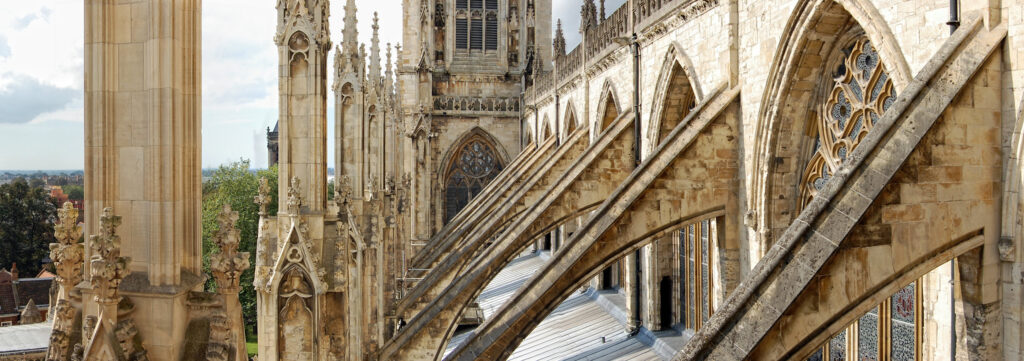
Flying buttresses – Another hallmark of Gothic architecture are flying buttresses, which are external support structures that dramatically transformed architectural possibilities during the Middle Ages. These features play a crucial role in the structural integrity of Gothic cathedrals and churches by effectively transferring the weight of the roof and vaulted ceilings to the separate buttresses. In the end, it allows for the creation of expansive, light-filled interior spaces. The functional significance and aesthetic appeal of these buttresses made them an enduring and defining element of Gothic architecture.
Slender columns – Aside from pointed arches and flying buttresses, Gothic architecture also saw the rise in new, thinner columns. Rather than the massive, drum-like columns in the Romanesque churches, these columns are much taller and slender and are often clustered and adorned with intricately designed and decorative elements.
Large windows – The slender columns and the lighter systems of thrust allowed for larger windows to be built, compared to previous architectural styles. This brought in a lot more light and added to the popularity of Gothic cathedrals and churches. The windows, tracery, carvings and ribs in a Gothic church combines to create an intricate and overwhelming display of ornamentation. In the case of late Gothic structures, nearly every surface is adorned with decorative elements. While the building as a whole maintains a sense of organization and unity, the abundance of shapes and patterns can initially make it challenging to perceive a clear sense of order.
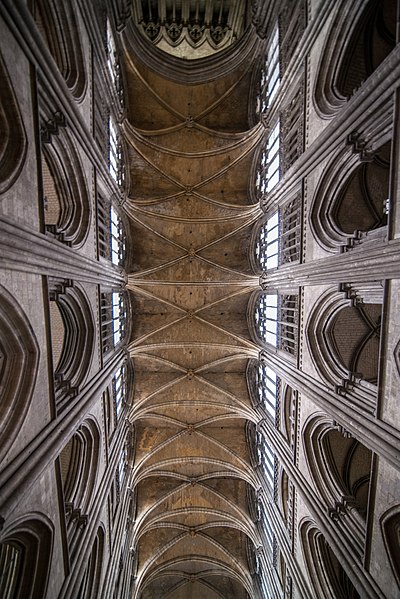
Ribbed vaults – Aside from huge windows and thin columns, Gothic buildings also often feature ribbed vaults, which are a system of intersecting arched ribs that support the ceiling or the roof. They serve both a structural and ornamental purpose as they efficiently distribute the weight of the ceiling or roof, allowing for the creation of larger, more open interior spaces, reducing the need for massive supporting walls. These ribs come in various designs, such as quadripartite and sexpartite, with each design influencing both the aesthetics and structural integrity of the building. The intersections of these ribs are often highlighted by keystones, central stones that secure the ribs in place. Additionally, decorative bosses, elaborately carved elements, may adorn these keystone intersections, further enhancing the visual richness of the vaults.
Groin vaults – Groin vaults work in conjunction with the ribbed vaults mentioned before, which are created when two intersecting barrel vaults form a cross. These vaults are not only structurally sound but also provide a visually dynamic and elegant ceiling. And like ribbed vaults, they may feature keystones and decorative bosses at their intersections, adding to the overall ornamental richness of the design.
Gothic Revival
The Gothic Revival architectural style, also known as Neo-Gothic or Victorian Gothic, was a significant architectural movement that emerged in the late 18th century and gained popularity during the 19th and early 20th centuries. This style is sought to revive and emulate the design elements and aesthetics of the original Gothic architecture from the Middle Ages. It was a response to the Enlightenment and Neoclassical styles that had dominated European architecture, with a desire to reconnect with what was perceived as a more romantic and medieval past.

The key characteristics of Gothic Revival architecture is similar to that of the original Gothic buildings. Prominent features include the use of pointed arches, ribbed vaults, buttresses, stained glass and extravagant gothic ornamentation – all of which can be found in Gothic architecture as well.
Notable examples of the Gothic Revival style include the Houses of Parliament in London, designed by Charles Barry and Augustus Pugin, and the Strawberry Hill House, an early example by Horace Walpole. The style also extended to ecclesiastical architecture, with many churches and cathedrals built or renovated in the Gothic Revival style. Overall, this style represents a nostalgic and romantic fascination with the medieval past and a reinterpretation of the original Gothic architecture with a fresh, 19th-century perspective.
Cathédrale Notre-Dame de Paris

When one thinks of Gothic architecture, one of the first buildings that pop up to mind is the Notre-Dame Cathedral in Paris. The Notre Dame boasts enormous rose windows, smaller stained glass features, flying buttresses and decorative gargoyles, all of which adds to the truly exemplary image of Gothic architectural style.
Lying at the eastern end of the Ile de la Cite, Notre-Dame was built on the ruins of two previous churches. It was initiated by Maurice de Sully, the bishop of Paris who in around 1160 had the idea of converting the ruins of the two earlier basilicas into a single building of a much larger scale. Following this, the foundation stone was laid by Pope Alexander III in 1163 and the high altar was consecrated in 1189. The choir, western facade and the nave were constructed as follows, and were completed by 1250. Lastly, over the next 100 years, architects and engineers added porches, chapels and other embellishments to create the spectacular attraction we know today.
In a tragic turn of events, a section of Notre Dame was engulfed in flames in 2019 and is presently undergoing meticulous restoration efforts. The Parisian authorities have pledged that it will be ready to welcome visitors once more in time for the 2024 Olympics in Paris.
Cologne Cathedral

Another awe-inspiring cathedral that we know of is the Cologne Cathedral of Cologne, Germany. Also called the German Kölner Dom, it is the largest Gothic church in northern Europe and features immense twin towers that stand 157 meters tall. It became a designated UNESCO World Heritage Site in 1996.
Construction of the cathedral began in 1248 – following the destruction by fire of an older cathedral over the same exact site – but was not completed until the 19th century. This huge timeline makes the cathedral one of the most ambitious and enduring architectural projects in Europe. Now let’s dive into some of the technical aspects of the construction: the choir was consecrated in 1322, but construction continued until 1560. And the project then stalled for centuries, with a wooden crane left standing some 56 meters above the group at the top of the south tower. Troops of the French Revolution marked a turn for the unfinished cathedral, as during the 1790s they used it as a stable and a hay barn. Following this, restoration work began in the 1820s, spurred on by Sulpiz Boisserée, a German proponent of the Gothic Revival movement. In 1842 a new cornerstone was laid by King Frederick William IV of Prussia, and work to complete the cathedral resumed in earnest. The architects Ernst Friedrich Zwirner and Richard Voigtel carried out the enterprise, guided by architectural drawings made in around the 1300. In the end, construction was finally completed in 1880.
Ultimately, the Cologne Cathedral is a testament to the grandeur and ambition of Gothic architecture, as it encompasses various arches, ribbed vaults and flying buttresses all familiar to this architectural style. Its construction spanned centuries and its completion in the 19th century demonstrates the enduring influence of this style as it continues to attract visitors from around the world today.
Further examples of famous gothic architecture
The Gothic Architectural movement was one that was experienced by many regions around the world, hence leaving its mark all over the globe. Below are a few more examples of notable Gothic buildings from different countries, many starkly unlike the two cathedrals we have already seen.
Chartres Cathedral, France: Located in Chartres, France, the Chartres Cathedral is a masterpiece of French Gothic architecture. It is renowned for its stunning stained glass windows and impressive sculptures.
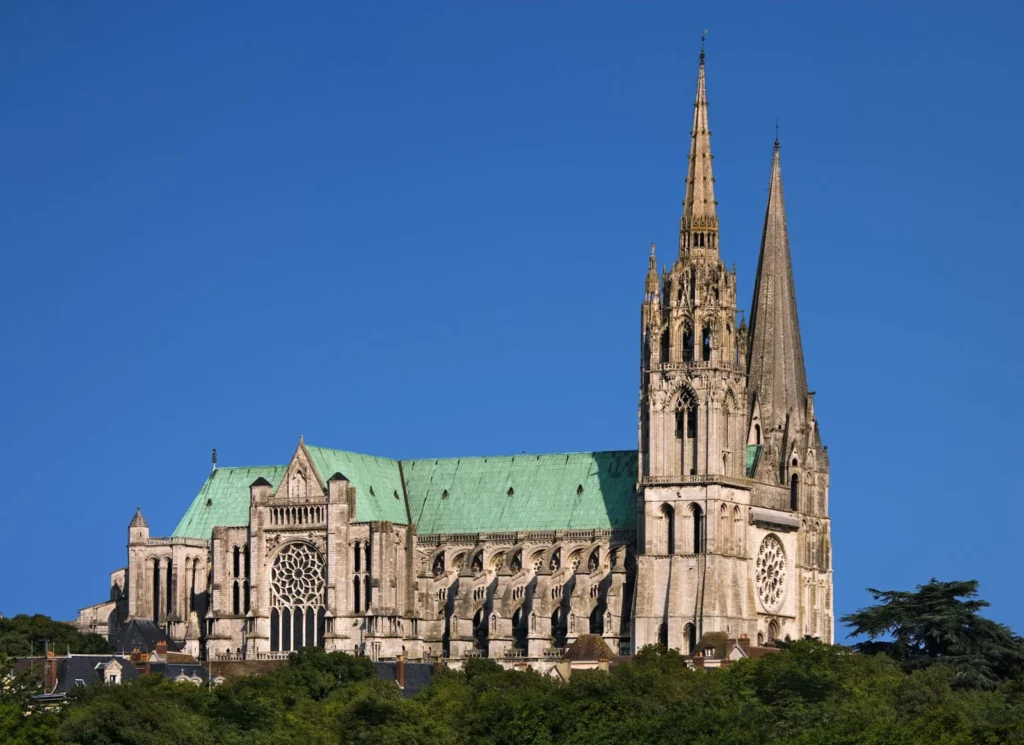
Milan Cathedral, Italy: The Milan Cathedral (Duomo di Milano) is a magnificent example of Italian Gothic architecture. Its ornate facade and towering spires make it a prominent landmark in Milan.
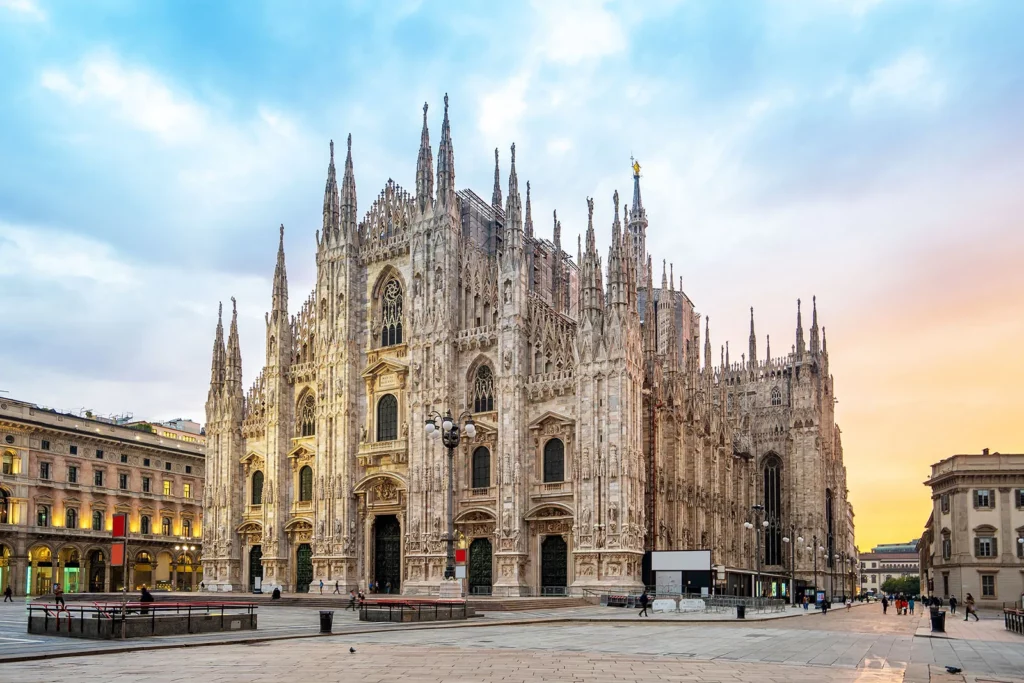
Burgos Cathedral, Spain: The Burgos Cathedral in Spain is a UNESCO World Heritage Site and a prime example of Spanish Gothic architecture. It features elegant ribbed vaults and a unique golden staircase.
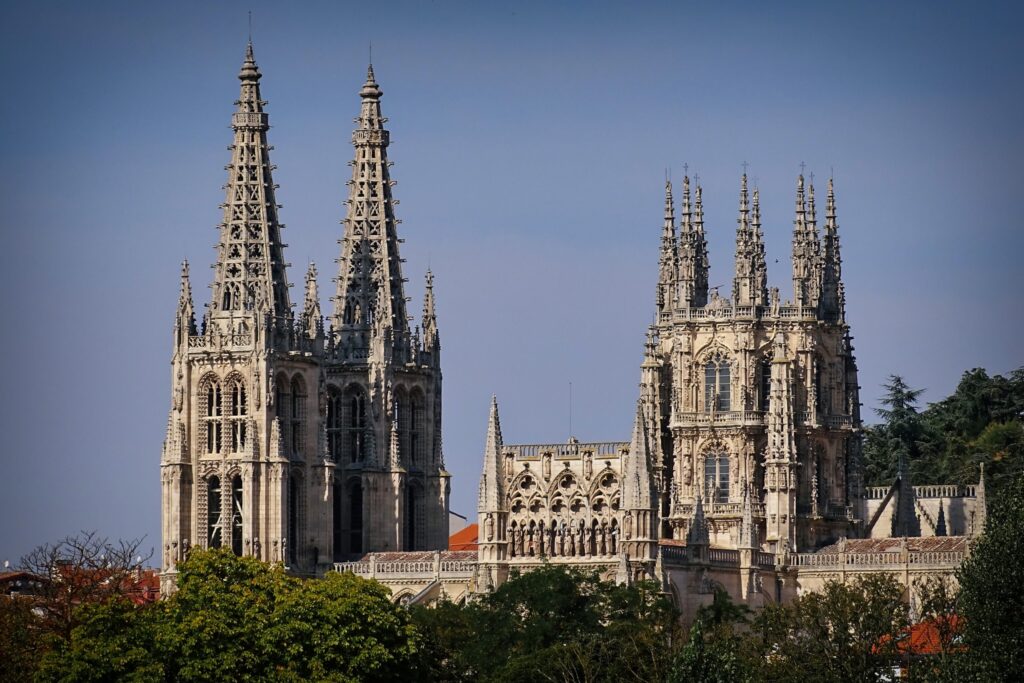
St. Stephen’s Cathedral, Austria: Located in Vienna, St. Stephen’s Cathedral (Stephansdom) is a prime example of Austrian Gothic architecture. Its iconic, diamond-patterned, multi-colored roof is a distinctive feature.

Prague Castle, Czech Republic: Prague Castle, one of the largest castle complexes in the world, contains various Gothic elements, including St. Vitus Cathedral, a masterpiece of Czech Gothic architecture.
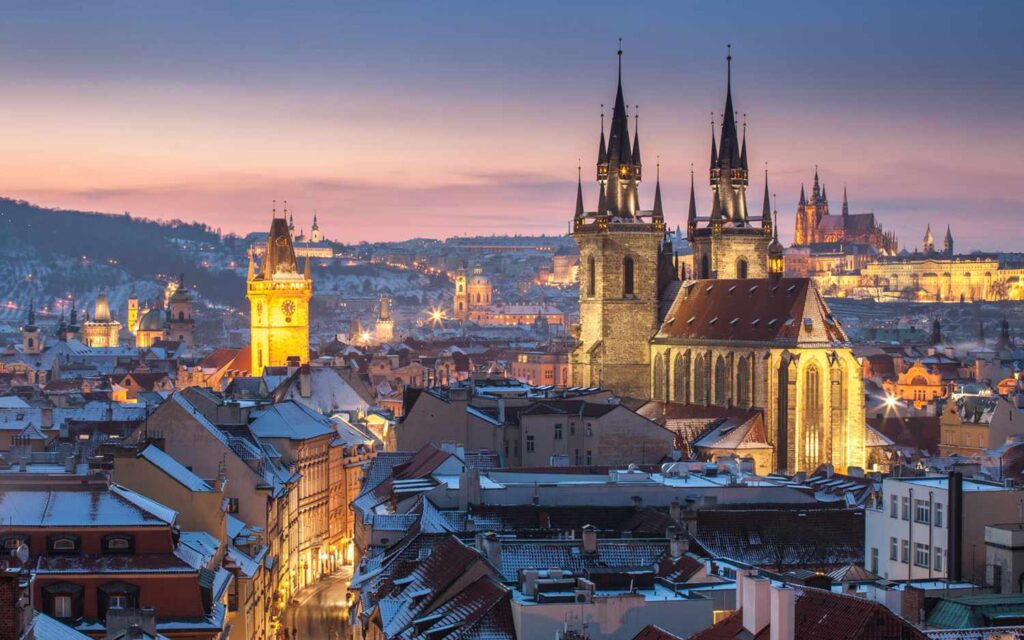
York Minster, England: York Minster is one of the largest and most impressive Gothic cathedrals in England. It boasts stunning stained glass, intricate carvings, and a rich history.
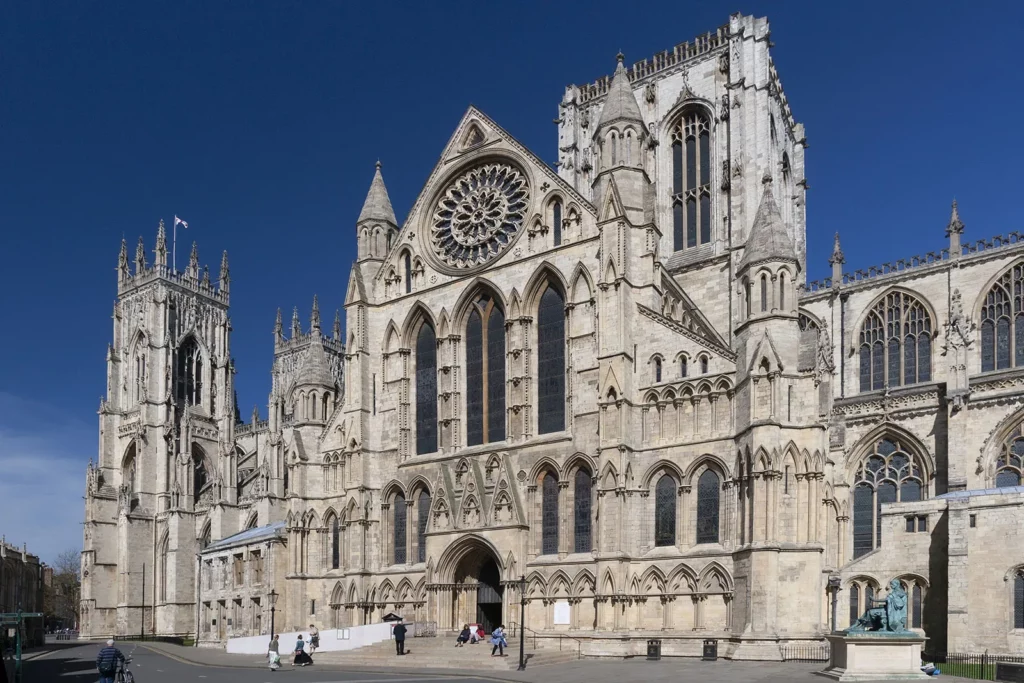
Ultimately, the movement of Gothic and Gothic Revival architecture has certainly inspired all that have stepped foot into their stunning churches and cathedrals from around the world. This style stands as a testament to the ingenuity, creativity and the spiritual aspirations of medieval builders and craftsmen as they work on buildings that take centuries to complete. As we gaze upon the magnificent cathedrals and structures that have withstood the test of centuries, we are reminded of the profound and lasting impact of this architectural legacy, a timeless testament to the human spirit’s reach for the divine.
Sources
- “Gothic Sculpture: History, Characteristics.” Visual-Arts-Cork.com, 2019, www.visual-arts-cork.com/sculpture/gothic-sculpture.htm.
- Overstreet, Kaley. “The Origins and Evolution of Gothic Architecture.” ArchDaily, 14 June 2022, www.archdaily.com/983605/the-origins-and-evolution-of-gothic-architecture.
- Spanswick, Valerie. “Gothic Architecture, an Introduction – Smarthistory.” https://smarthistory.org/gothic-architecture-an-introduction/.
- The Editors of Encyclopedia Britannica. “Gothic Architecture.” Encyclopædia Britannica, 9 Nov. 2017, www.britannica.com/art/Gothic-architecture.




